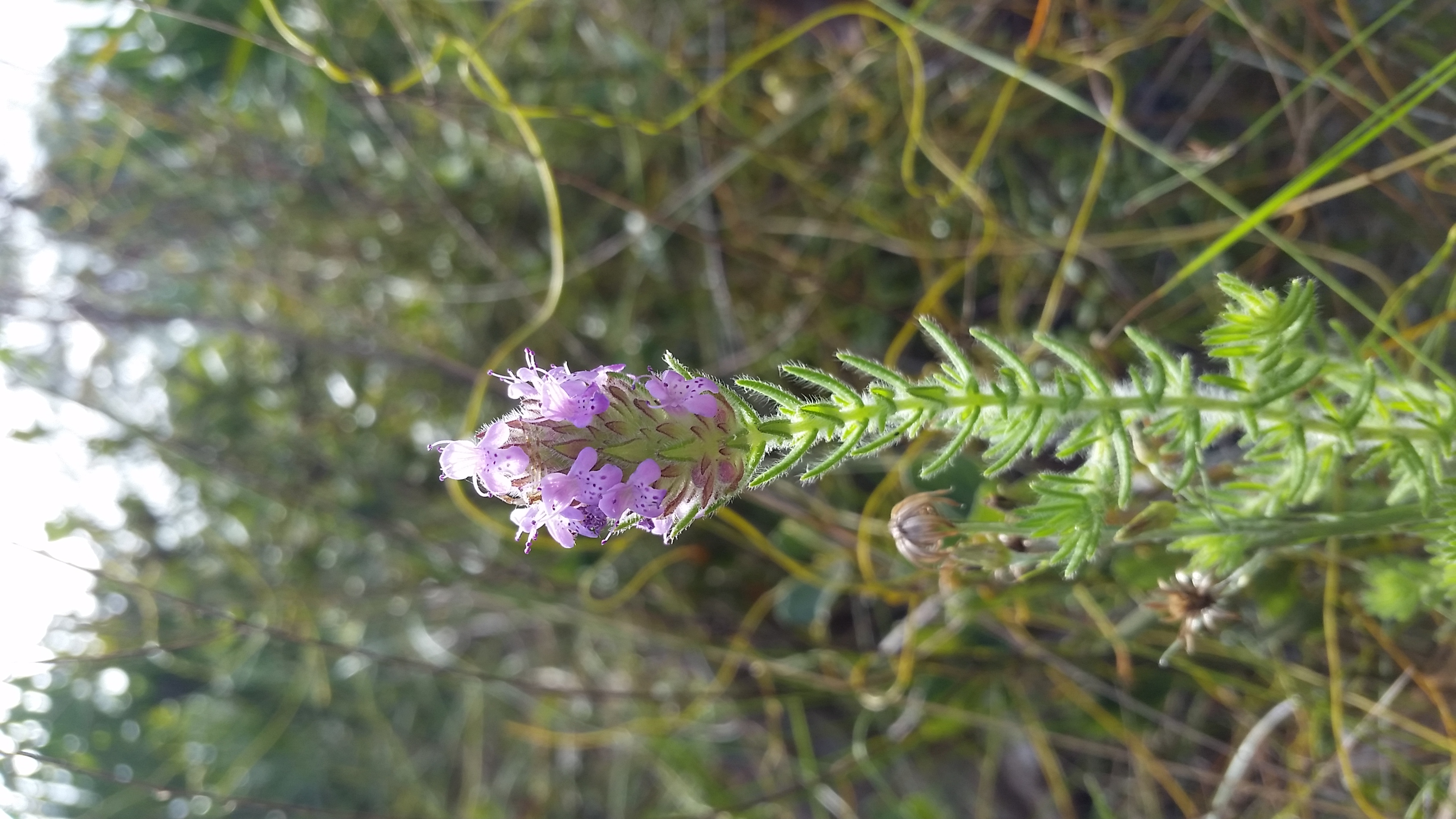Piloblephis rigida
| Piloblephis rigida | |
|---|---|

| |
| Photo taken by Michelle Smith at Jonathan Dickinson State Park | |
| Scientific classification | |
| Kingdom: | Plantae |
| Division: | Magnoliophyta - Flowering plants |
| Class: | Magnoliopsida – Dicotyledons |
| Order: | Lamiales |
| Family: | Lamiaceae ⁄ Labiatae |
| Genus: | Piloblephis |
| Species: | P. rigida |
| Binomial name | |
| Piloblephis rigida (W. Bartram ex Benth.) Raf. | |

| |
| Natural range of Piloblephis rigida from USDA NRCS Plants Database. | |
Common name: wild pennyroyal
Contents
Taxonomic notes
Synonyms: Pycnothymus rigidus (Bartram ex Bentham) Small; Satureja rigida Bartram ex Bentham
This is the only species in the genus Piloblephis[1]. In Greek, Pilo is hairy and belphis is eyelid, this refers to the hairs on the flower. The name rigida refers to the stiff branches[2].
Description
This is a short lived perennial species with thin woody stems and needle-like leaves that give off a pennyroyal smell when crushed[3]. The 2-lipped flowers are purple with dark purple spots on the lower tips, arranged in dense, showy clusters[1].
Distribution
It is found in peninsular Florida, some counties in Georgia, and a few western Bahamas islands[2].
Ecology
Habitat
It can be found in well drained sunny locations, that include pine flatwoods, sandhills, and xeric oak/saw palmetto scrubs. [3] [4] Associated species include oaks and saw palmetto.
Phenology
Seen flowering late December 2015 at Jonathan Dickinson State Park on the Kitching Creek Trail by Michelle Smith; very abundant.
Pollination
The following Hymenoptera families and species were observed visiting flowers of Piloblephis rigida at Archbold Biological Station: [5]
Halictidae: Agapostemon splendens, Augochlorella aurata, Lasioglossum miniatulus, L. nymphalis
Megachilidae: Megachile brevis pseudobrevis
Sphecidae: Oxybelus laetus fulvipes
Conservation and management
Cultivation and restoration
The Miccosukee and Seminole Indians made tea and flavored soups and used it to repel insects [2].
Photo Gallery
References and notes
- ↑ 1.0 1.1 [[1]]Florida Wildflower Foundation. Accessed: February 20, 2016
- ↑ 2.0 2.1 2.2 [[2]]Eat the Weeds. Accessed: February 20, 2016
- ↑ 3.0 3.1 [[3]] Native Florida Wildflowers. Accessed: February 20, 2016
- ↑ Florida State University Robert K. Godfrey Herbarium database. URL: http://herbarium.bio.fsu.edu. Last accessed: October 2015. Collectors: Cecil R. Slaughter. States and Counties: Florida: Osceola. Compiled by Tall Timbers Research Station and Land Conservancy.
- ↑ Deyrup, M.A. and N.D. 2015. Database of observations of Hymenoptera visitations to flowers of plants on Archbold Biological Station, Florida, USA.